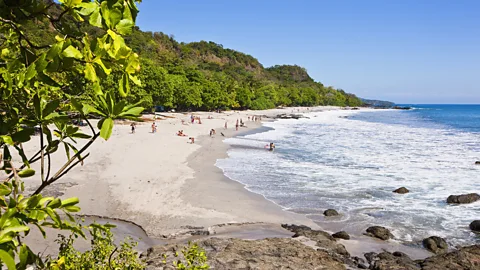The Central American region where people live longest
 Atlantide Phototravel/Getty Images
Atlantide Phototravel/Getty ImagesBlue Zones are regions of the world with populations that regularly live into healthy old age. There are just five Blue Zones on the entire planet, and research suggests that they are caused by a combination of factors, which range from diet and weather to religion. A magazine had commissioned me to find out why Costa Rica was home to one of these exceptional regions, so Dre, my then-girlfriend, and I flew there from California.
From the town of Puerto Viejo on Costa Rica's Caribbean coast, we took a dug-out canoe up the Yorkin River, deep into the jungle that borders Panama. This is the homeland of Costa Rica's indigenous Bribri people, whose remoteness kept their culture alive during successive European invasions.
The jungle is teeming with life, and the Bribri use that bounty for everything, ranging from camphor sap that repels mosquitoes to a plant that they chew for toothache. To my untrained eye, the Bribri gardens looked much like the rest of the jungle, with different species piled around each other and butterflies flitting between the branches. But that apparent chaos was deceptive.
"That's because you are used to seeing farms of single crops," said Albin, a local guide. "We don't farm monocultures because the plants evolved to work in harmony: the legumes put nitrogen in the soil and banana trees put down potassium, so we don't need artificial products or fertilisers.
"Each plant attracts different birds, so there's hundreds of bird species here, whilst you might find only a dozen on a monoculture farm. Each species eats different insects, and there are also coral snakes and boas that kill rodents, so we don't need pesticides or traps."
"What about venomous snakes">window._taboola = window._taboola || []; _taboola.push({ mode: 'alternating-thumbnails-a', container: 'taboola-below-article', placement: 'Below Article', target_type: 'mix' });
